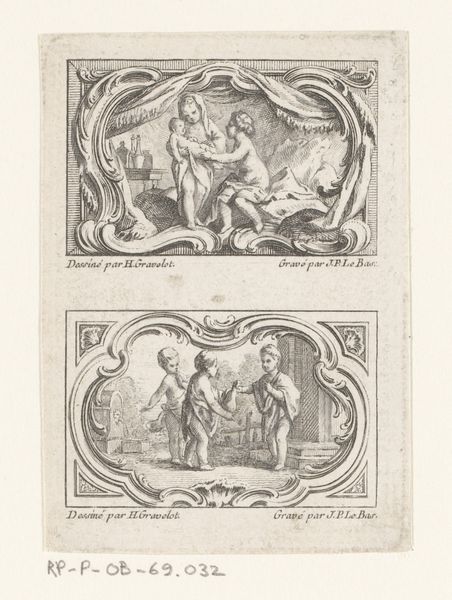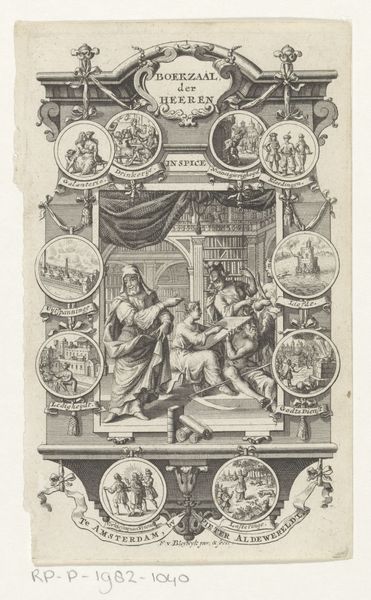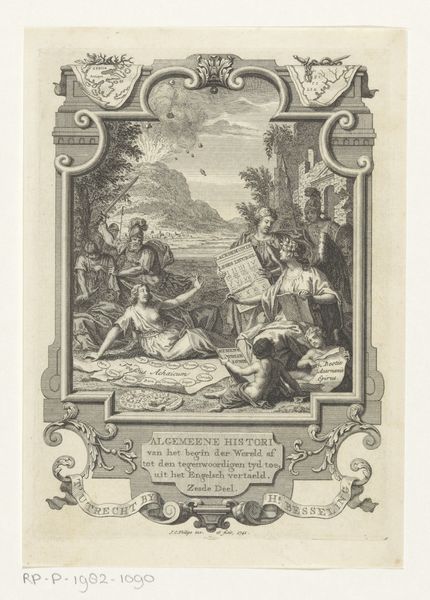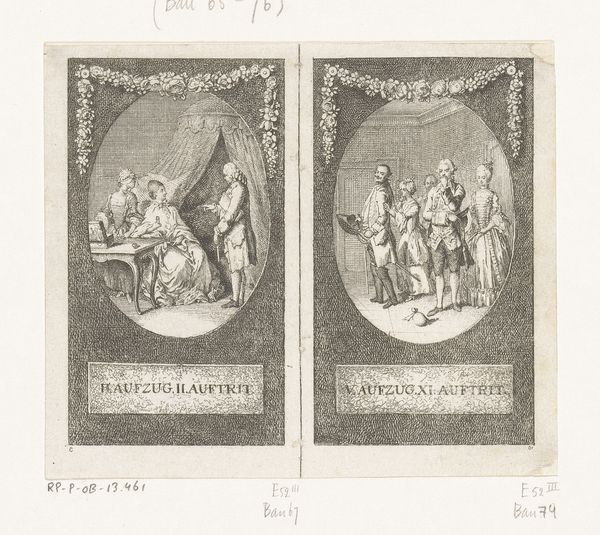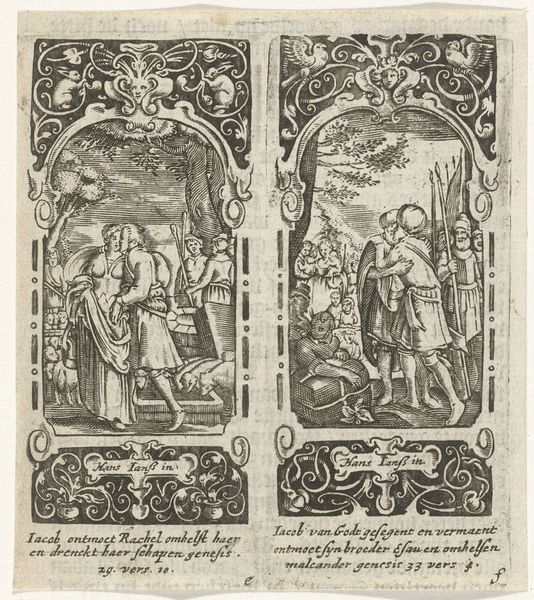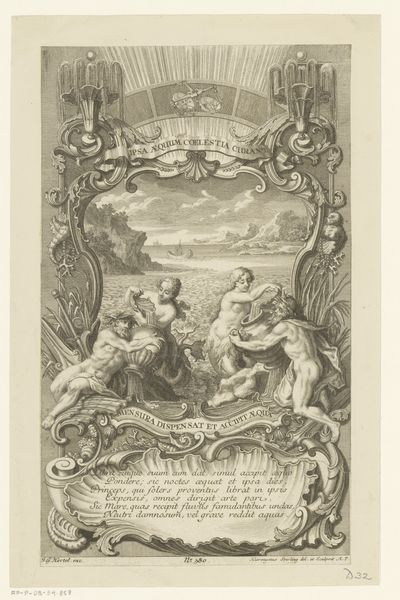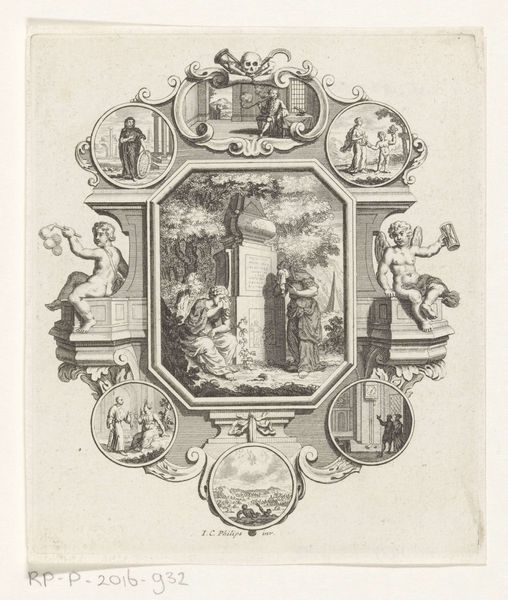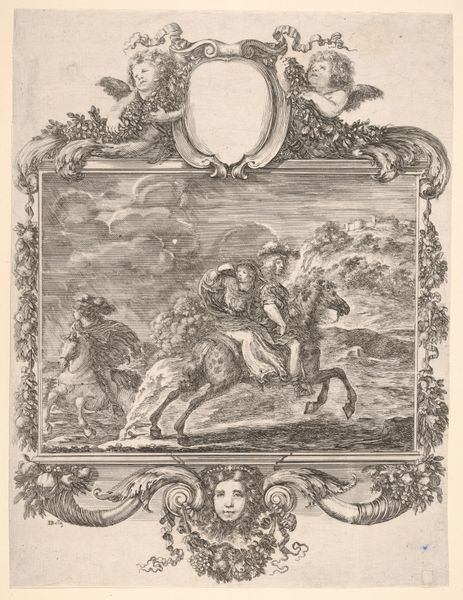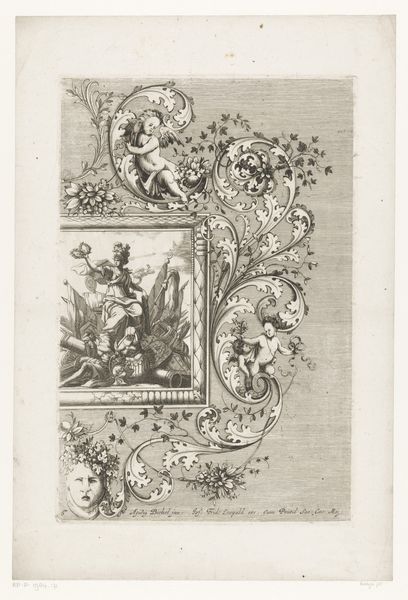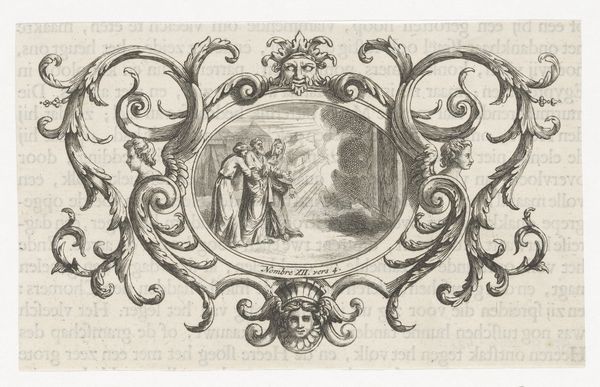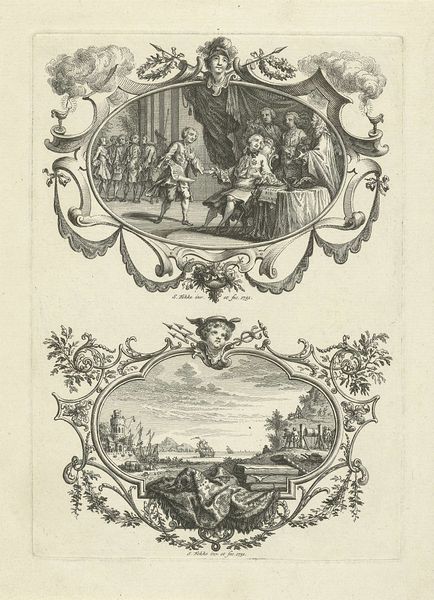
Twee vignetten met drie putti temidden van gebouwen 1717 - 1783
0:00
0:00
drawing, pen, engraving
#
drawing
#
baroque
#
pen sketch
#
old engraving style
#
figuration
#
pen
#
genre-painting
#
engraving
Dimensions: height 92 mm, width 59 mm
Copyright: Rijks Museum: Open Domain
Curator: This artwork, residing here at the Rijksmuseum, is called "Two vignettes with three putti among buildings". It's a drawing in pen, likely an engraving, produced sometime between 1717 and 1783 by Jacques Philippe Le Bas. What strikes you first about this piece? Editor: The delicate lines! There’s an airiness to the scenes, a whimsical lightness that seems characteristic of Baroque sensibilities, yet… almost feels sparse here. Curator: Sparse in what sense? The abundance of cherubic figures doesn’t register as a type of excess? Editor: I think I read it more formally. There is detail in the architectural framing, but notice the background buildings, almost hinted at rather than described. This gives each composition depth, of course, but feels somehow like stage sets – carefully placed, deliberately arranged. Curator: Yes, that’s a fair assessment. The “stage set” is a clever metaphor; these vignettes were designed during a time when social order and display were paramount. Cherubs often acted as symbols of innocence but could also represent status and the potential lineage of powerful families. Editor: Lineage even here, among playful architectural tableaus? It’s not readily apparent. Is the placement of putti particularly meaningful? The way they are grouped? Curator: Placement tells us about accessibility and social hierarchy of that era. The vignettes give the impression of staged access to ideal upbringing and social place, something which wealthy patrons strived for themselves in reality. Notice the subtle positioning, framing these cherubs carefully among classic building types. Editor: That’s an interesting idea. And considering how many of Le Bas' works served as book illustrations and other forms of reproduction… This artwork becomes an item consumed in a commercial market that helps visualize very real, and yet still quite dream-like possibilities. Curator: Precisely, this drawing can act as both artistic accomplishment in its own right, as well as functional document speaking to contemporary power structures in European high society. I am very grateful for your formalist perspectives illuminating further dimensions to this seemingly simplistic engraving!
Comments
No comments
Be the first to comment and join the conversation on the ultimate creative platform.
